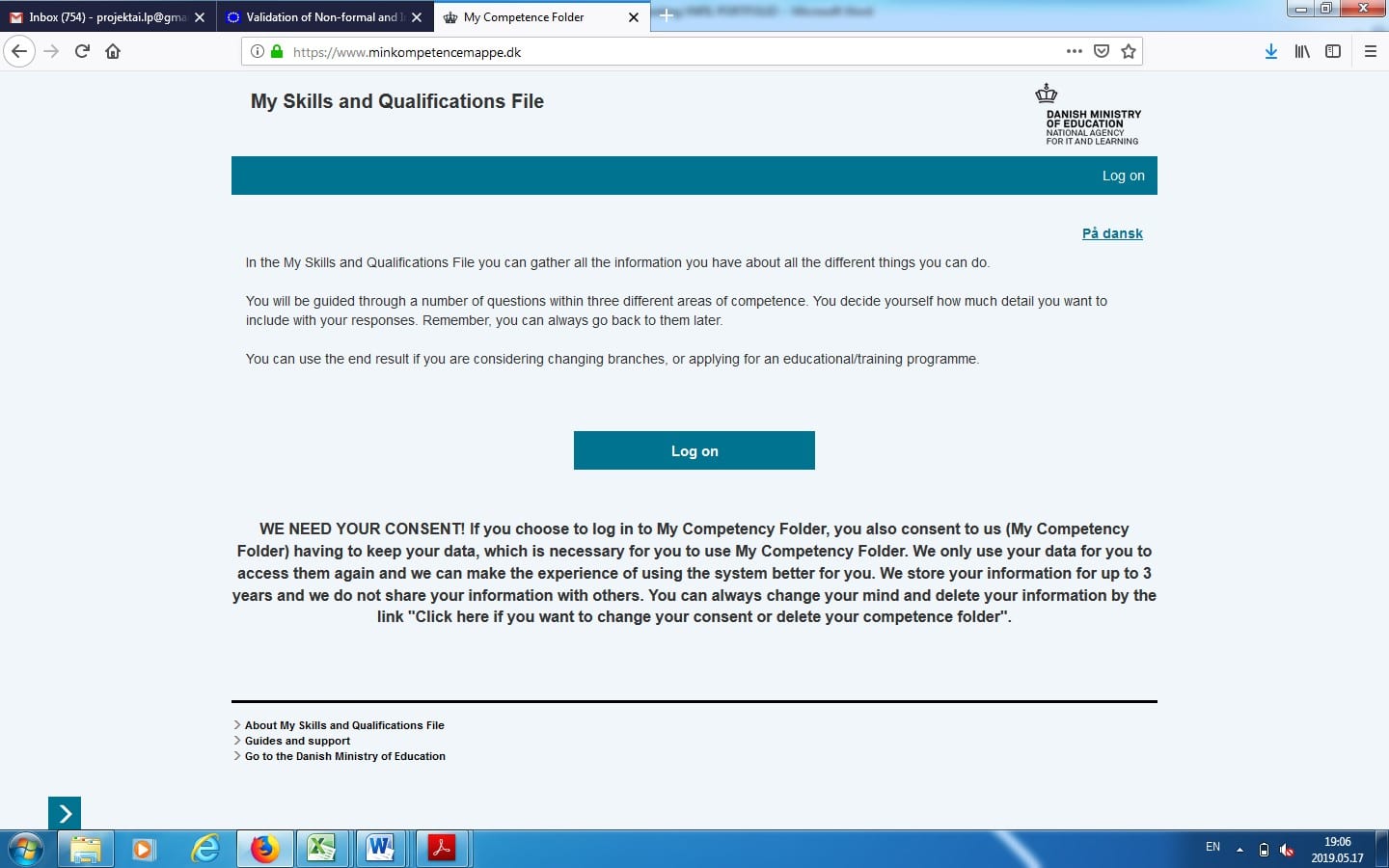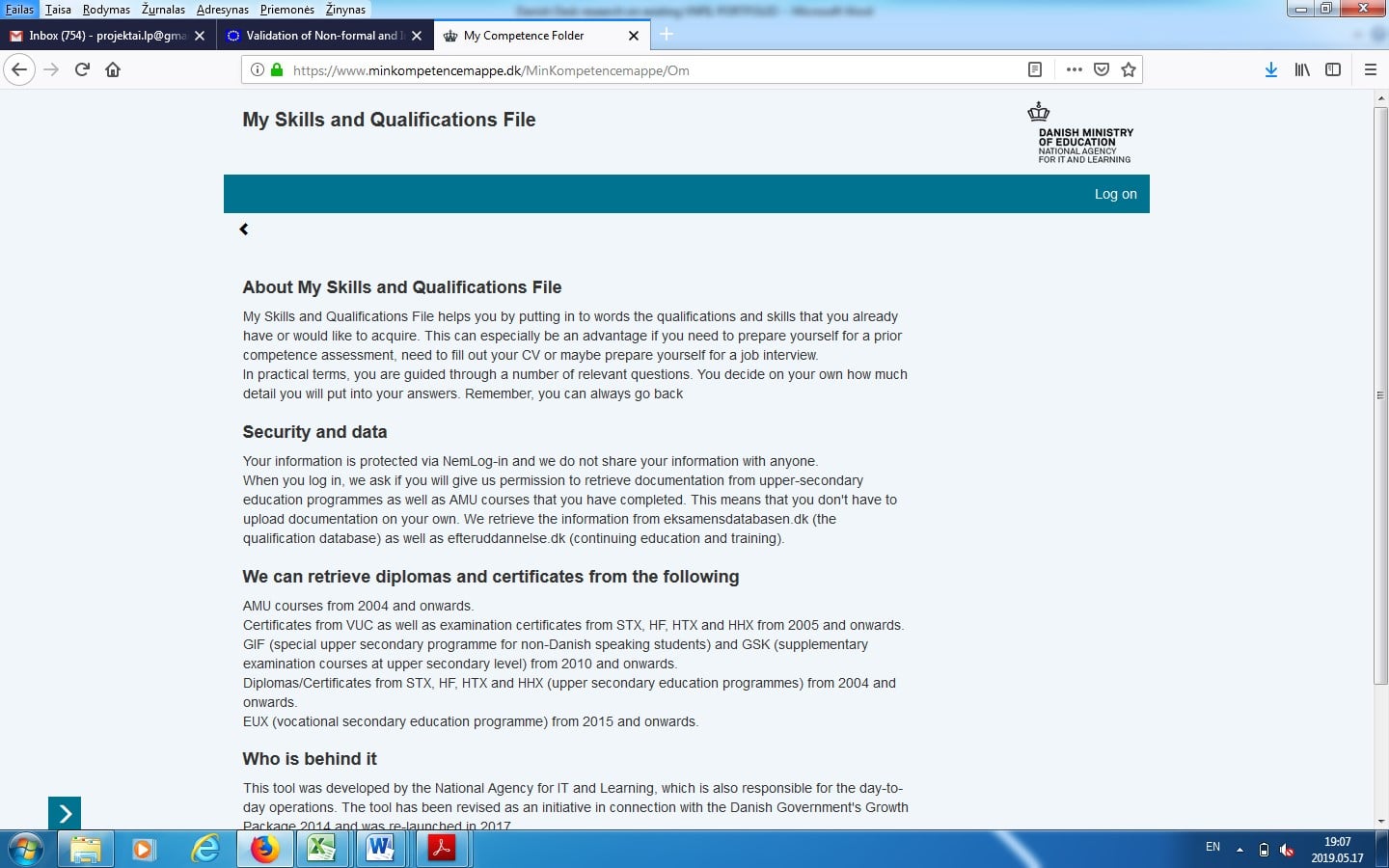Desk research on existing VNFIL portfolio and e-portfolio
COUNTRY – DENMARK
NAME OF PORFOLIO/E-PORTFOLIO – ASSESSMENT OF REAL COMPETENCIES OR SKILLS AUDIT
-
AIM
|
– to give each individual the right to have his/her prior learning experiences validated in relation to specific goals of adult education and continuing training programmes. * *Citizens from other EU countries are granted the same rights to undergo validation processes |
-
TARGET GROUP
According to Danish law, the assessment must be conducted by the educational institution offering the corresponding study programmes – adults
-
SECTOR
According to Danish law, the assessment must be conducted by the educational institution offering the corresponding study programmes – all sectors
-
HOW TO USE
For general assessment: My Competence Portfolio: www.minkompetencemappe.dk – everyone can register to the site and perform the required tasks.
For specific or convergent assessment http://www.knowentia.com/ .
-
LINKS WITH OTHER TOOLS
No links found.
-
MAIN CONTENT OF PORTFOLIO
In Denmark, a distinction is often made between general and specific types of competence assessment:
■ A general or divergent assessment aims to identify all competences mastered by the individual. The focus of the process is for the person to clarify and describe all of his/her prior learning in order to identify future choices of job and education. Often, the process will follow a formative learning approach. Example of approache include My Competence Portfolio: www.minkompetencemappe.dk
■ A specific or convergent assessment aims to identify which of the individuals’ competences are relevant in relation to the standards of a specific qualification. This can be carried out after a broad assessment. An example of approach for technical professions and qualifications is the Misc. IT test tools, i.a. http://www.knowentia.com/
Most tools include self-assessments during which the individual is to grade his/her experience, knowledge or competences on a scale typically ranging from 1 to 6. Often, the individuals themselves describe their competences. In other instances, the competences have been described in advance, and the individuals are merely required to assess their competences on a certain scale.
Documentation through self-assessment enables individuals to reflect on their own competences and makes it possible to describe them in a systematic way.


-
SOURCE OF INFORMATION (LINK TO A WEBSITE)
https://cumulus.cedefop.europa.eu/files/vetelib/2014/87054_DK.pdf




